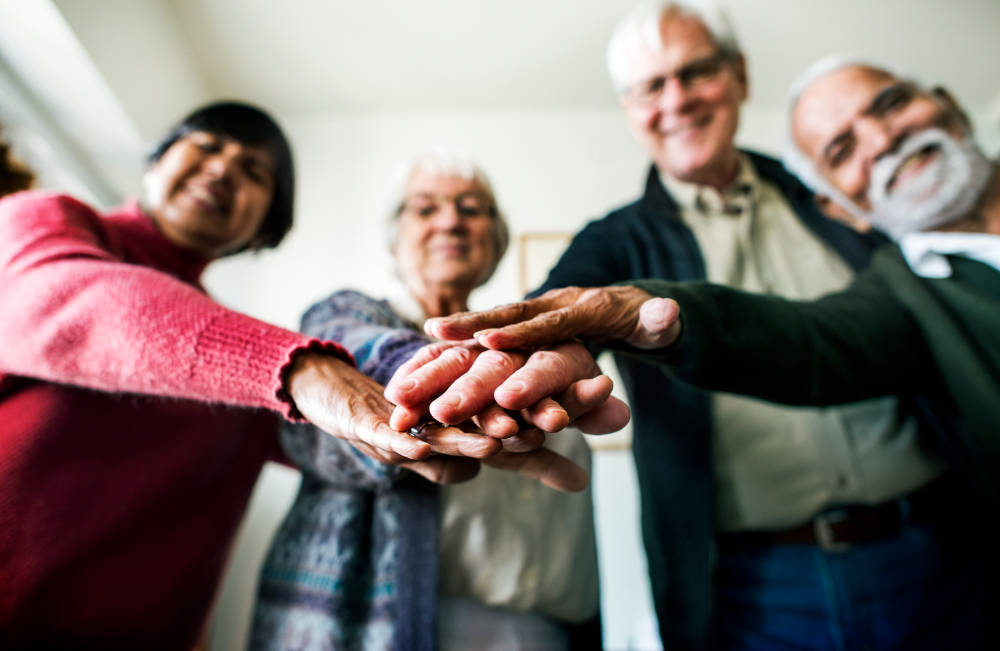As we age, the risk of falling amplifies due to a myriad of factors such as declining physical strength, impaired vision, or medical conditions.
These falls can significantly impact an individual’s quality of life, making fall prevention an essential consideration for older adults and their caregivers. The following are three pivotal strategies to lower fall hazards among this vulnerable demographic.
1. Individualised Fall Risk Assessment
Conducting a thorough fall risk assessment is the cornerstone of effective fall prevention. Furthermore, this assessment encompasses a screening for fall history, a comprehensive fall evaluation, and, when necessary, gait and balance screening. Subsequently, based on the findings, healthcare providers can devise an individualised intervention plan targeting the identified risk factors.
One such structured approach to fall prevention is seen in the Falls Management Program (FMP) utilised in nursing homes. Initially, the FMP considers every resident to have some level of fall risk but adopts various strategies to address different levels of risk.
The FMP outlines a systematic progression of immediate and long-term management for residents in each of these classes. This progression is determined through a detailed screening process that evaluates various risk factors, including the resident’s medication, orthostatic hypotension, vision, mobility, and unsafe behaviour.
2. Home and Environmental Modifications for Fall Prevention
Home modifications are a crucial aspect of fall prevention, particularly among older adults, as they tackle the various environmental hazards that could lead to falls. Furthermore, a significant percentage of falls occur within the home, making it imperative to create a safer living environment. To this end, here are several modifications, supported by different sources, that can be employed to minimise the risk of falls.
General Home Modifications
In the realm of fall prevention among older adults, home modifications play a pivotal role in safeguarding their well-being. As a significant percentage of falls occur within the home, it becomes imperative to address environmental hazards that could potentially lead to accidents.
In this regard, a range of practical and evidence-based modifications can be made to create a safer living environment. These modifications encompass aspects like lighting, clutter removal, flooring enhancements, stairway and step improvements, bathroom modifications, and bedroom adjustments. By implementing these changes, one can significantly reduce the risk of falls, thereby enhancing the safety and quality of life for older individuals.
Lighting: Ensuring adequate lighting, especially in stairways, hallways, and other frequently used areas, is essential. It’s advisable to have a well-charged phone or a landline in easily accessible areas to call for help if necessary.
Clutter Removal: Keeping the home free from clutter and ensuring that pathways are clear can help in reducing the likelihood of trips and falls.
Flooring: Replacing floors that are in poor condition or are slippery is advisable. Consider installing slip-resistant flooring to prevent falls.
Stairways and Steps: Installing sturdy rails on both sides of stairways and steps can provide the necessary support and balance for individuals as they navigate through these areas.
Bathrooms: Investing in accessible showers or tubs and creating more floor space can make the bathroom safer for seniors. Additionally, installing grab bars near the toilet and in the shower or tub can provide extra support.
Bedrooms: Modifying the height of the bed, adding handholds to aid getting in and out of bed, and creating walk-in closets to keep clutter off the floor are useful interventions.
Kitchens: Lowering counters and appliances for easier accessibility and ensuring that commonly used items are within reach can contribute to a safer kitchen environment.
3. Encouragement of Physical Activity and Balance Training
Regular physical activity is a key component in preventing falls among older adults, as it enhances strength, balance, and coordination. Moreover, exercises such as Tai Chi, balance training, functional exercises, and strength training exercises have been identified as effective means to mitigate fall risks. Additionally, incorporating these activities into a daily routine can significantly reduce the likelihood of falls among older individuals.
Tai Chi: Tai Chi is a form of exercise that combines various fall-prevention benefits including improved flexibility, strength, agility, and cardiovascular fitness. It particularly helps in enhancing postural stability, which is critical in preventing falls among older adults.
Balance and Strength Training: Balance and functional exercises have been shown to reduce the rate of falls by 24% as they improve body mechanics and balance. Programs that incorporate multiple types of exercises, including balance, functional, and resistance exercises, have been found to reduce fall rates by 28%.
Navigating the Path to Fall Prevention
The journey towards minimising fall risks among older adults is a comprehensive endeavour, intertwining individualised assessments with practical home modifications and an active lifestyle.
Furthermore, the integration of emerging technologies, continuous education for caregivers, and fostering a culture of community support are among the facets that could further enhance the safety nets. Additionally, as we advance, the synergy of traditional approaches with innovative solutions may pave the way for more robust fall prevention mechanisms. Ultimately, through these concerted efforts, we can contribute to a higher quality of life for older adults.
References
-
Chapter 4. Long Term Management. (n.d.). Agency for Healthcare Research and Quality. https://www.ahrq.gov/patient-safety/settings/long-term-care/resource/injuries/fallspx/man4.html
-
Kruschke, C., & Butcher, H. K. (2017, November 1). Evidence-Based Practice Guideline: Fall Prevention for Older Adults. Journal of Gerontological Nursing; Slack Incorporated (United States). https://doi.org/10.3928/00989134-20171016-01
-
Spano-Szekely, L., Winkler, A., Waters, C., Dealmeida, S., Brandt, K., Williamson, M., Blum, C., Gasper, L., & Wright, F. (2019, April 1). Individualized Fall Prevention Program in an Acute Care Setting. Journal of Nursing Care Quality; Lippincott Williams & Wilkins. https://doi.org/10.1097/ncq.0000000000000344
-
Preventing Falls at Home: Room by Room. (n.d.). National Institute on Aging. https://www.nia.nih.gov/health/preventing-falls-home-room-room#:~:text=Place%20a%20landline%20or%20well,Outdoor%20spaces
-
The National Council on Aging. (n.d.). https://www.ncoa.org/article/how-to-prevent-falls-with-home-safety-modifications
-
B. (2023, May 30). From Minor to Major: The Complete Guide to Home Modifications to Prevent Seniors From Falling. BigRentz. https://www.bigrentz.com/how-to-guides/guide-home-modifications-prevent-seniors-falling
-
Lektip, C., Chaovalit, S., Wattanapisit, A., Lapmanee, S., Nawarat, J., & Yaemrattanakul, W. (2023, July 20). Home hazard modification programs for reducing falls in older adults: a systematic review and meta-analysis. PeerJ; PeerJ, Inc. https://doi.org/10.7717/peerj.15699
-
Jacobson, C. (2021, January 20). Reducing falls for older adults: How physical activity keeps you balanced. Scope. https://scopeblog.stanford.edu/2021/01/20/reducing-falls-for-older-adults-how-physical-activity-keeps-you-balanced/#:~:text=Tai%20chi%20combines%20multiple%20fall,supply%20oxygen%20to%20your%20muscles
-
Sherrington, C., Fairhall, N., Kwok, W., Wallbank, G., Tiedemann, A., Michaleff, Z. A., Ng, C. A. C. M., & Bauman, A. (2020, November 26). Evidence on physical activity and falls prevention for people aged 65+ years: systematic review to inform the WHO guidelines on physical activity and sedentary behaviour. International Journal of Behavioral Nutrition and Physical Activity; Springer Science+Business Media. https://doi.org/10.1186/s12966-020-01041-3
-
Fall Prevention: Balance and Strength Exercises for Older Adults. (2021, August 8). Johns Hopkins Medicine. https://www.hopkinsmedicine.org/health/wellness-and-prevention/fall-prevention-exercises
-
Poulton, G. (2020, January 1). Exercise to Reduce Falls in Older Adults. AAFP. https://www.aafp.org/pubs/afp/issues/2020/0101/p42.html#:~:text=Balance%20training%2C%20functional%20exercise%2C%20and,to
-
Papalia, G. F., Papalia, R., Balzani, L. A. D., Torre, G., Zampogna, B., Vasta, S., Fossati, C., Alifano, A. M., & Denaro, V. (2020, August 11). The Effects of Physical Exercise on Balance and Prevention of Falls in Older People: A Systematic Review and Meta-Analysis. Journal of Clinical Medicine; Multidisciplinary Digital Publishing Institute. https://doi.org/10.3390/jcm9082595













